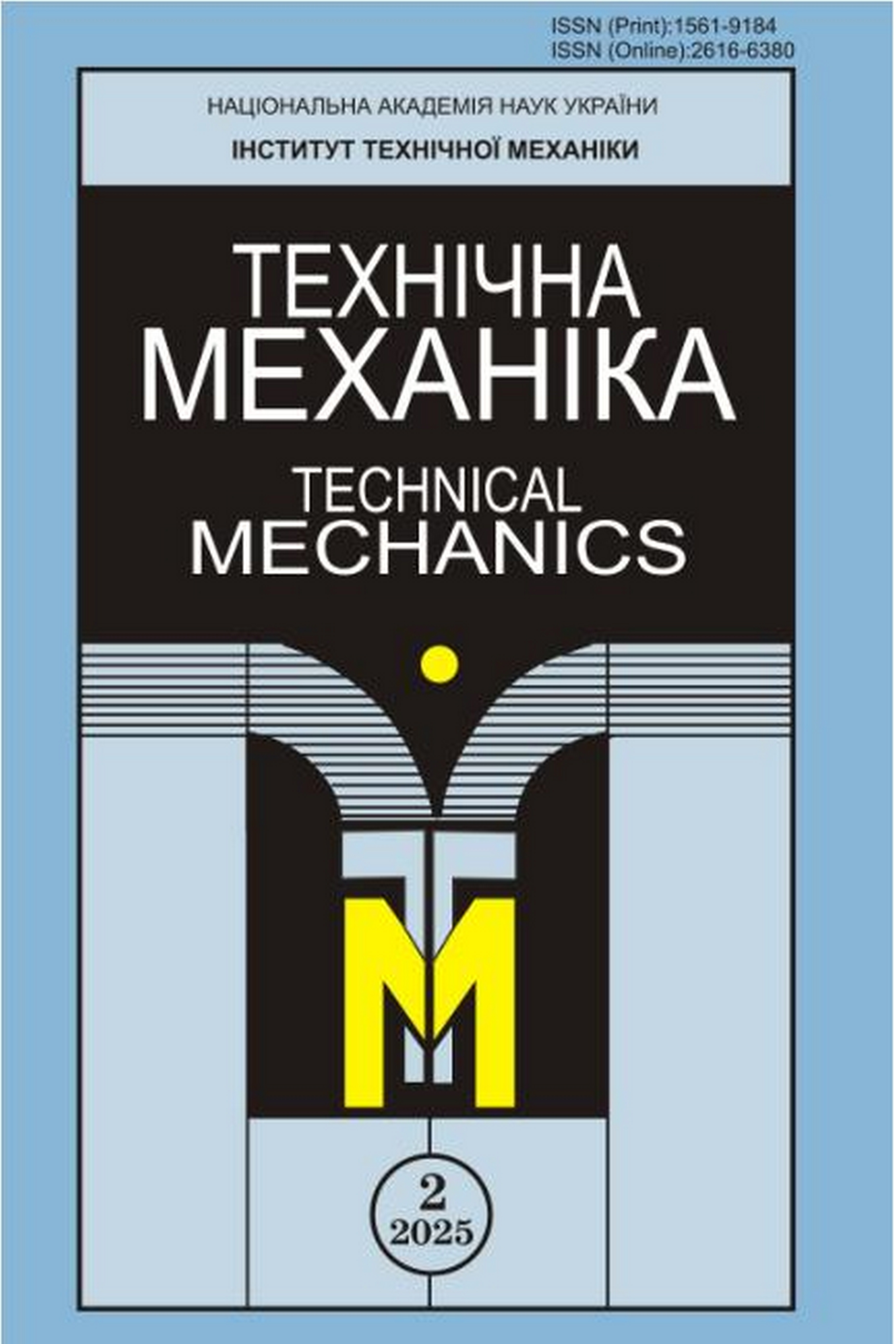CHOICE OF AN OPTIMUM TECHNOLOGY AND PROCESS EQUIPMENT FOR FRICTION PAIR WORK SURFACE STRENGTHENING
Keywords:
surface hardening, nanostructured coating deposition, surface layer structural phase state modification, combined surface strengthening methods, expert evaluation of quality.Abstract
DOI: https://doi.org/10.15407/itm2025.02.111
The goal of this work is to select and analyze the most relevant scientific and technical information necessary to solve current problems of significantly improving the functional and operational characteristics of machines and mechanisms. The analysis of existing strengthening methods is based on the recognition of the fundamental dependence of the friction characteristics of friction pair work surfaces on the structural phase state of the structural material surface layer. It is stated that the most promising surface strengthening methods are based on the use of a physical action on the surface by concentrated flows of energetic particles. It is asserted that the most promising frictional property modification methods are ion-plasma and beam surface strengthening technologies. This paper presents a comparative analysis of the thirteen most promising surface strengthening methods and their efficiency in solving various problems of improvement of functional and operational characteristics. The comparative analysis is formalized by using a method of expert evaluations. Coating technologies and technologies of diffusion and implantation modification of the friction layer structural phase state are considered. The features of plasma process devices suitable for the implementation of various surface strengthening methods are considered. Recommendations on the optimal use of the available technologies and process equipment are given. Emphasis is given to plasma process devices for combined strengthening. Lines of further development of multifunctional plasma process devices are proposed. The recommendations on the choice of optimum plasma devices and the implementation of various plasma technologies are based on the author’s experience in the development and application of proprietary plasma devices of different types. The results of this work may be used in the development of new, or in the upgrading of existing, vacuum-plasma process equipment.
REFERENCES
1. Sulima V. A., Shulov V. A., Yagodkin Yu. D. Surface Layer and Machine Parts Service Properties. Мoscow: Mashinostroyeniye, 1988. 240 pp. (In Russian).
2. Mishin V. M. Quality Management. Moscow: YuNITI-DANA, 2005. 463 pp. (In Russian).
3. Orlov A. I. Economic-Organizing Simulation. Part 2. Expert Evaluations. Moscow: Bauman Moscow State Technical University, 2011. 486 pp. (In Russian).
4. Stepanova T. Yu. Machine Parts Surface Strengthening Technologies. Ivanovo: Inanovo State University of Chemistry and Technology, 2009. 64 pp. (In Russian).
5. Panin V. E., Sergeev V. P., Panin A. V. Structural Material Surface Layer Nanostructuring and Nanostructured Coating Deposition. Tomsk: Tomsk Polytechnical University, 2010. 254 pp. (In Russian)
6. Kuzmichev A. I. Magnetrion Sputtering Systems. Kyiv: Avers, 2008. 244 pp. (In Russian).
7. Vizir' A. V., Oks E. M., Shchanin P. M., Yushkov G. Yu. Non-self-sustained hollow-cathode glow discharge for large-aperture ion sources. Technical Physics. 1997. V. 42. No. 6. Pp. 611-614.
https://doi.org/10.1134/1.1258586
8. Svatkovsky I. V. Magnetron sputtering system development lines. Doklady BGUIR. 2007. No. 2(18). Pp. 112-121. (In Russian).
9. Mozgrin D. V., Fetisov I. K., Khodachenko G. V. Experimental study of high-current forms of a low-pressure quasi-steady discharge in a magnetic field. Fizika Plazmy. 1995. V. 21. No. 5. Pp. 422-- 433. (In Russian).
10. Kuzmichev A. I. Pulse magnetron sputtering systems. Proceedings of the ISTFE-14 Kharkiv Scientific Assembly. Kharkiv: Kharkiv Institute of Physics and Technology, 2014. Pp. 221-244. (In Russian).
11. Aksenov I. I., Andreev V. A., Belous V. E. et al. Vacuum Arc: Plasma Sources, Coating Deposition, and Surface Modification. Kyiv, Naukova Dumka, 2012. 727 pp. (In Russian).
12. Karpov D. A., Kuznetsov V. S., Litunovsky V. N. Microfraction Content Reduction in Vacuum Arc Coating Deposition. NIIEFA Preprint P-0998. Saint Petersburg: Efremov Reseach Institute for Electrophysical Instrumentation, 2011. 56 pp. (In Russian).
13. Andreiev A. O., Pavlenko V. M., Sysoiev Yu. O. Manufacturing Engineering. Fundamentals of Vacuum Arc Coating Deposition. Kharkiv: National Aerospace University named after M.Ye.Zhukovsky "Kharkiv Aviation Institute", 2018. 288 pp. (In Ukrainian).
14. Shulaev V. M., Andreev A. A., Gorban V. F. Comparison of the characteristics of vacuum arc nanostructured coatings deposited with the application of high-voltage pulses to the substrate. Fizika i Inzheneriya Poverkhnosti. 2007. V. 5. No. 1-2. Pp. 94 - 97. (In Russian).
15. Arzamasov B. N., Bratukhin B. N., Eliseev Yu. S. et al. Ion Chemical-Physical Treatment of Alloys. Moscow: Bauman Moscow State Technical University, 1999. 400 pp. (In Russian).
16. Kaplun V. G. Ion Nitriding in Hydrogen-Free Media. Khmelnytskyi: Khmelnytskyi National University, 2015. 318 pp. (In Russian).
17. Karpov D. A., Litunovsky V. N. Plasma Immersion Ion Implantation: Physical Foundations and Technological Applications. Saint Petersburg: Efremov Reseach Institute for Electrophysical Instrumentation, 2009. 62 pp. (In Russian).
18. Kadyrzhanov K. K. Ion Beam and Ion Plasma Modification of Materials. Moscow: Moscow State University, 2005. 40 pp. (In Russian).
19. Belyy A. V. et al. Physical and Technological Foundations of Ion Beam Material Treatment. Novopolotsk: Polotsk State University, 2010. 84 pp. (In Russian).
20. Belyy A. V., Kukarenko V. A., Lobodaeva O. V. et al. Ion Beam Treatment of Metals, Alloys, and Ceramics. Minsk: FTI, 1998. 218 pp. (In Russian).
21. Boitsov A. G., Mashkov N. V., Smolentsev V. L. Parts Surface Strengthening by Combined Methods. Moscow: Mashinostroyeniye, 1991. 144 pp. (In Russian).
22. Movchan B. A., Malashenko I. S. Vacuum Deposited Heat-Resistant Coatings. Kyiv: Naukova Dumka, 1983. 232 pp. (In Russian).
23. Kartmazov G .N. , Polyakov Yu. I., Sleptsov S. N., Lukirskiy Yu. V., Scherbak S. P., Chalyy S. O. Coatings obtauined by atomic-ion sputtering under electric arc and high-frequency ionization. Problems of Atomic Science and Technology. 2011. No. 2. Pp. 167-173. (In Russian).
24. Tumarkin A. V., Khodachenko G. V. Melted-cathode magnetron discharge. In: Plasma Physics and Methods. Moscow: National Research Nuclear University Moscow Engineering Physics Institute, 2013. Pp. 276-282. (In Russian).
25. Bleikher G. A., Krivobokov V. P., Tret'yakov R. S. Surface erosion model for liquid targets of magnetron sputtering systems. Izvestiya Vysshikh Uchebnykh Zavedenii. Fizika. 2011. V. 11. Iss. 12. Pp. 148-153. (In Russian).
26. Borisov D. P. et al. SPRUT vacuum technological complex for high-quality strengthening surface structure formation by magnetron arc methods. Radiation-Solid Interaction: Proceedings of the 8th International Conference, Minsk, September 23-25, 2009. Minsk, 2009. Pp. 299-301. (In Russian).
27. Berlin E. V., Dvinin S. A., Seidman L. A. Vacuum Technology and Equipment for Thin Film Deposition and Etching. Moscow: Tekhnosfera, 2007. 176 pp. (In Russian).
28. Maishev Yu. P., Vinogradov M. I. Vacuum Processes and Equipment of Ion and Electeron Beam Technology. Moscow: Mashinostroyeniye, 1989. 56 pp. (In Russian).
29. Sablev L. P., Andreev A. A., Kartmazov G. N. Some characteristics of a plasma-cathode contracted arc discharge. Proceedings of the Kharkiv Nano Assembly. Kharkiv, 2006. Pp. 158-162. (In Russian).
30. Sablev L. P., Lomino N. S., Stupak R. I. Two-stage vacuum arc discharge: characteristics and ignition methods. Proceedings of the VIth International Conference "Equipment and Technologies of Metal and Alloy Thermal Treatment". Part. 2. Kharkiv, 2005. Pp. 159-169. (In Russian).






